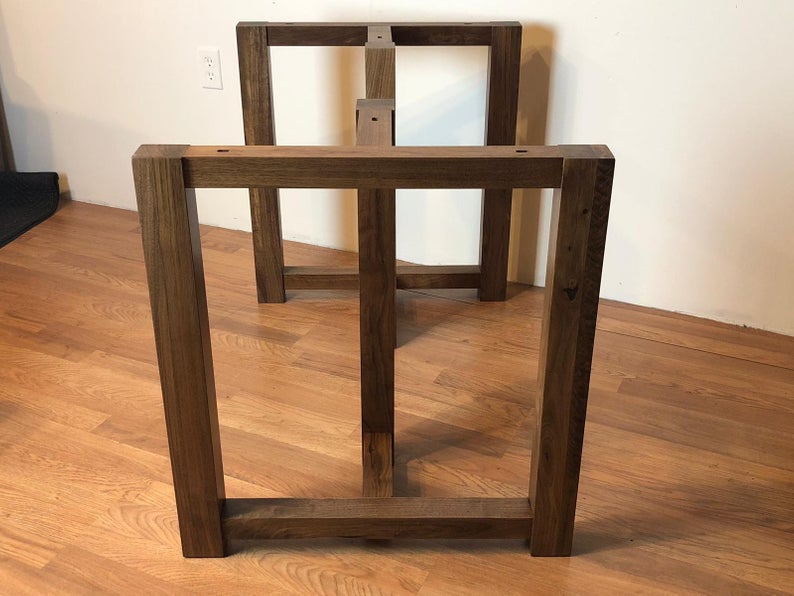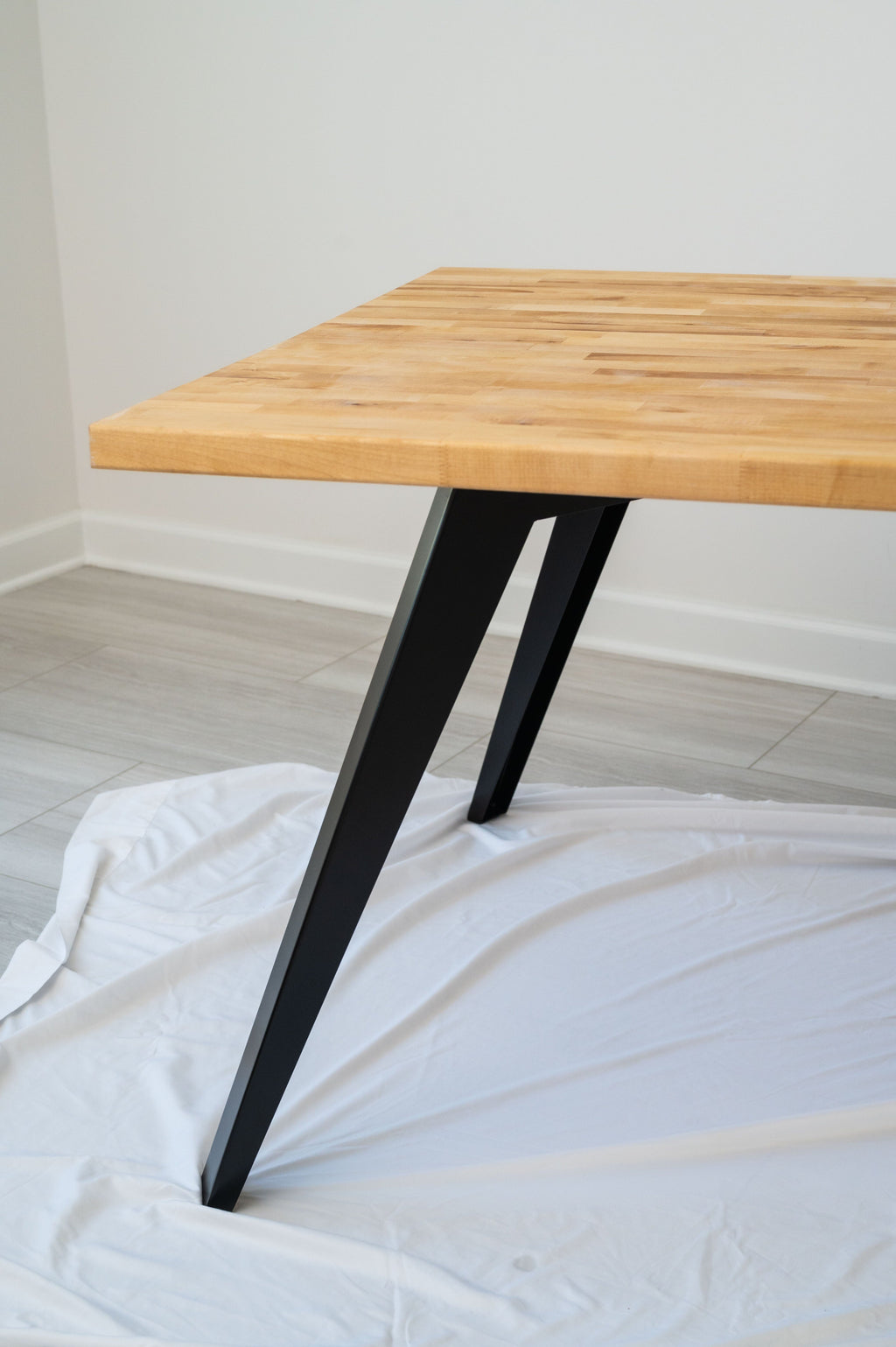Trick Variables to Keep in Mind for Eating Table Legs Timber Choices
When choosing wood for dining table legs, a number of vital variables necessitate cautious factor to consider to make certain both performance and aesthetic appeal. The option of timber kind, defined by its longevity and unique grain patterns, plays a critical function in the total design and longevity of the item.
Timber Kind and Features
When selecting wood for dining table legs, it is important to comprehend the one-of-a-kind attributes of numerous timber types. Various timbers provide distinct advantages and negative aspects, influencing both the resilience and aesthetic allure of the ended up product.
Hardwoods, such as oak, cherry, and maple, are generally preferred for their stamina and resistance to use. Oak, recognized for its excellent sturdiness, also includes a prominent grain that can include personality to the table. Maple supplies a smooth surface area and is less prone to bending, making it a reliable option for useful furnishings. Cherry wood, with its abundant shade that deepens over time, gives a glamorous appearance however may need more upkeep to prevent scrapes.
On the other hand, softwoods like want and fir are more budget-friendly and easier to work with, yet they are less durable than woods. Pine is lightweight and features a warm, rustic look, making it a favored selection for laid-back eating setups. Nonetheless, it is extra vulnerable to dents and scrapes.
Recognizing these characteristics will certainly help in making an educated decision to make sure the legs of the table fulfill both aesthetic and practical needs.
Grain Patterns and Aesthetic Appeal
Choosing the right grain pattern can significantly enhance the aesthetic charm of eating table legs. The timber's grain is not simply a visual feature; it imparts an one-of-a-kind character and beauty per item. Various wood species show unique grain patterns, ranging from the straight lines of maple to the intricate swirls of oak and the striking figure of walnut. These patterns can evoke various designs, from rustic to contemporary, making it vital to pick a grain that lines up with the total style of the eating space.
In addition, the orientation and range of the grain can influence the perceived dimension and beauty of the table. As an example, larger, more noticable grains might provide a strong, dramatic impact, while finer, subtler grains can create a fine-tuned, understated look. Furthermore, the ending up procedure can additionally boost these patterns, highlighting the all-natural appeal of the wood and bringing out abundant colors.
Inevitably, the option of grain pattern need to integrate with various other style aspects, such as the table top and bordering furniture, guaranteeing a cohesive aesthetic that raises the dining experience. Thoughtful option of timber grain not just adds to the table's beauty yet likewise shows the proprietor's preference and design.
Resilience and Toughness
The longevity and strength of dining table legs are critical factors to consider for making sure durability and stability in any type of eating room. Selecting the best wood is essential, as various types exhibit differing levels of durability.

Eventually, purchasing premium timber and durable building and construction approaches will yield a table that stands the test of time, while providing a trusted foundation for plenty of dishes shared among friends and family. Prioritizing longevity and strength ensures that your table continues to be functional and visually pleasing for many years to come.
Upkeep and Treatment
Proper maintenance and treatment are vital for maintaining the resilience and toughness of eating table legs made from timber. Normal cleansing is vital; using a soft, wet cloth guarantees that dirt and particles do not build up, which can lead to scrapes and dullness. It is suggested to stay clear of extreme chemicals or abrasive materials that can damage the coating.
In addition, using an ideal timber gloss or wax regularly can help keep the shine and shield the wood from dampness and spills. It is vital to adhere to the producer's recommendations concerning the kind of item to use, as particular finishes might react adversely to particular chemicals.
Humidity and temperature fluctuations can also affect wood table legs, causing them to warp or split. It's best to put the table far from straight sunshine and warm resources. Dealing with these without delay can avoid additional damage. if the table legs have any type of scratches or dents.
Lastly, regularly evaluating the joints and screws for tightness is very important to keep structural stability (Dining Table Legs Wood). By adhering to these maintenance methods, property owners can guarantee their wooden dining table legs remain practical and attractive for many years ahead
Ecological Considerations
When picking timber for eating table legs, it's necessary to take ecological considerations into account. The sourcing and sustainability of wood are critical you could try here in minimizing environmental impact. Selecting timber from certified resources, such as those backed by the Forest Stewardship Council (FSC), guarantees that the lumber is collected sensibly, advertising woodland conservation and biodiversity.

Furthermore, neighborhood sourcing of wood minimizes transportation discharges, supporting neighborhood economies while lessening environmental influence. It is likewise suggested to be familiar with the wood's therapy and completing processes, as particular chemicals can be harmful to both human wellness and the setting. By prioritizing sustainable timber options, consumers can add to environmental conservation while appreciating the durability and appeal of their table legs.
Verdict
In conclusion, picking wood for dining table legs requires careful consideration of various variables, including timber types, grain patterns, and sturdiness. The visual charm of one-of-a-kind grain patterns can boost the overall design, while the toughness of hardwoods makes sure longevity. Maintenance requirements and ecological sustainability more influence timber options, stressing the value of sourcing from licensed or recovered materials. An informed selection procedure eventually adds to a aesthetically enticing and practical eating area that lines up with sustainable techniques.
When picking wood for dining table legs, a number of important variables necessitate cautious factor to consider to guarantee both functionality and aesthetic appeal.Correct maintenance and treatment are vital for protecting the longevity and stamina of eating table legs made from timber.When selecting wood for eating table legs, it's important to take environmental factors to consider into account. By prioritizing sustainable wood selections, customers can add to environmental you can try this out conservation while appreciating the toughness and elegance of their eating table legs.
In conclusion, picking wood for dining table legs requires mindful consideration of various factors, consisting of wood kinds, grain patterns, and sturdiness. Dining Table Legs Wood.